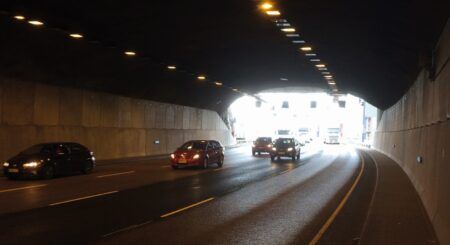The majority of private and public stakeholders rank transportation as the infrastructure most in need of a major investment, with more than one billion vehicles on the road worldwide creating billions of hours of traffic congestion, including more than five billion hours of travel delay each year in the USA alone. Global IT developer, Cisco, has now announced a suite of validated solutions that securely connect disparate transportation systems, in order to increase safety and reduce roadside incidents, improve traffic flow, and provide a centralized view of highway systems. Using the Internet of Everything, the company’s new Connected Roadways system creates an end-to-end infrastructure that will help enable the deployment of vehicle-to-vehicle (V2V) and vehicle-to-infrastructure (V2I) applications. The company hopes that this approach will offer: new business models and growth opportunities for transportation authorities, cities, automakers and freight operators; a safer driving experience for motorists; and the underlying infrastructure to help support the future widespread introduction of self-driving or autonomous vehicles.
It is widely accepted that connected vehicle technologies will allow drivers and highway system operators to make informed decisions that can ultimately reduce traffic and transit delays and avoid potential collisions. Cisco’s Connected Roadways system addresses the interoperability requirements based on the US Department of Transportation’s (USDOT) Connected Vehicle Reference Implementation Architecture (CVRIA), including: V2I communication to improve safety, where on board DSRC (Dedicated Short Range Communications) radio from transit vehicles can interact with Traffic Safety System (TSS) for Transit Signal Priority (TSP); Computer Aided Dispatch (CAD) that dispatches information to field service technicians, mass transit vehicles or emergency services assisted by computer, via two-way radio, text messages or other forms of communication; Automatic Vehicle Location (AVL) that automatically detects vehicle location and securely dispatches the information via the GPS; and Wireless Bulk Data Transfer that gives fleet mass transit vehicles access to download multiple data types, such as schedules and route information, from a central repository over the DSRC interface to the onboard unit (OBU).
The suite of Connected Roadways systems is composed of Cisco’s IP Next Generation Network, Enterprise, Collaboration, and technology products, including: Industrial Ethernet ruggedized switches that provide transport connectivity to roadside equipment components and can withstand wide ambient temperature ranges and harsh environments; the 819 Integrated Services Router that offers onboard and roadside connectivity on vehicles to provide cellular and wireless connectivity, by linking DSRC radio to city-wide Unified MPLS transport networks; and ASR 900/1000 Series Routers that deliver scalable and resilient Unified MPLS transport infrastructure by interconnecting between roadside, data center, and operations center networks. Wim Elfrink, Cisco’s chief globalization officer, said, “Transportation agencies, cities, mass transit passengers and motorists all benefit from technology advancements for roadways and transportation. Our latest transportation solutions provide a straightforward approach to improving the basic infrastructure that individuals rely on. This can transform the everyday driving and transit experience, with fewer accidents and delays occurring.”




